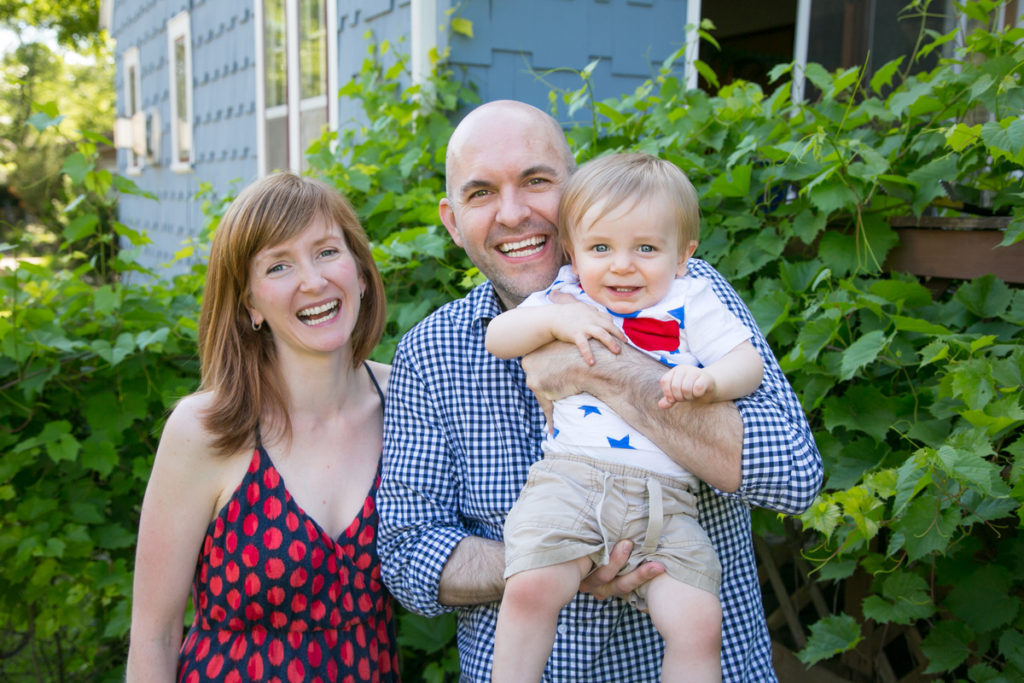Because we lived in crunchy Madison, Wisconsin, when I was pregnant with our first son, we found ourselves with a dizzying array of “natural” options for pregnancy, birth, and postpartum care. At the parenting space where I took prenatal yoga, the bulletin board was papered with flyers from doulas advertising birth support, placenta encapsulation, breastfeeding help, and other postpartum services. There were two doula collectives and multiple doula speed dating events. Uncertain at first, my husband and I eventually hired a doula, and I learned not only how valuable she could be for me in the hospital room but also just how much she could help my husband and me be a team.
On the one hand, it seemed reasonable to believe that women’s bodies would have evolved for vaginal delivery; on the other hand, what did I know?
The prevailing wisdom, at least in Madison’s attachment parenting–inflected culture, was that, if you insisted on delivering in a hospital rather than at home, a doula was a necessary protection against the interventions a hospital medical team would surely force on you. I didn’t share that skepticism of hospital birth, and I’d read that the hospital connected to my HMO was certified “baby-friendly” and had been recently renovated to create larger delivery rooms and family suites where both parents could stay after the birth. I trusted my doctor when she said her preference during birth was to do as little as possible. But she also seemed aware that some women mistrusted medical birth, and she observed that if you believed you needed a doula to intervene with your medical team, that was a sign of a more serious problem with your provider.

Still, I was acutely aware of my utter lack of preparation for the task at hand. On the one hand, it seemed reasonable to believe that women’s bodies would have evolved for vaginal delivery; on the other hand, what did I know? I knew I had a cervix, and I knew it would have to open up like a terrifying bolthole, but I couldn’t find it on my body or in a diagram. So I felt pretty certain we’d need some help when it came time for delivery.
My husband, in contrast, was reading The Birth Partner in bed each night and practicing laboring positions with me at our childbirth class. He wasn’t convinced we needed anyone to help, and he worried that having an extra person in the room would be awkward. He agreed, though, to at least meet a doula or two and consider the idea.
Her goal, she said, was to support us in having a healthy baby and a positive birth experience. It was this openness that persuaded my husband that a doula wouldn’t intrude on the birth but instead could help him to help me.
I emailed a doula from one of the collectives and made plans to meet up at a coffee shop that had recently hosted the elementary school art fair, and, as my husband and I waited to meet our prospective doula, my eyes scanned the children’s drawings still hanging on every wall. When Johanna sat down across from us, I briefly reconsidered having chosen such a public place for a conversation that was going to require me to say “vaginal” at least once. But Johanna’s experience was reassuring. She’d supported women through the kind of birth I hoped for—vaginal, unmedicated, with as little intervention as possible—and she’d also worked with women who knew from the outset that they wanted pain relief, as well as women who had planned caesareans and women whose labors ended with an emergency C-section. She didn’t have an agenda for our birth. Her goal, she said, was to support us in having a healthy baby and a positive birth experience. It was this openness that persuaded my husband that a doula wouldn’t intrude on the birth but instead could help him to help me.
I’d wanted our first meeting with our doula to be like a really good first date: lots of buzzy chatting, an immediate connection. This was the person, after all, who’d be with us when we met our baby for the first time. But Johanna was subdued and competent. That peaceful energy turned out to be exactly what both my husband and I needed.
My labor began like in the movies: a dramatic gush of fluid as my water broke two days before my due date. Johanna met us at the hospital the next morning, once my contractions got seriously under way. While I’d slept a few hours in a hospital bed that night, my husband had been curled up on a loveseat in our room. When Johanna arrived and saw his exhaustion, she sent him out of the room to get a sandwich and some coffee—and when he returned with a Subway bag in hand, she waved him away again, knowing I wouldn’t want to see or smell his hoagie when I was on a diet of jello and broth.

For 14 hazy hours of labor, Johanna supported us both. All the laboring positions we’d practiced in our birthing class disappeared from our memories once we were actually in it, so it was Johanna who made suggestions: lean and sway, roll on the birthing ball, kneel on all fours. For each position, she showed my husband how to help me, whether it was by holding me or pressing the heel of his palms against my lower back as counterpressure during each contraction. She coordinated with the nurses so that my husband could stay by my side the whole time.
We had great, supportive nurses. When they switched shifts, they chatted on the side of the room briefly about my birth plan, and no one blinked an eye at my desire for a low-intervention labor. During the hardest part of labor, when I was kneeling with my head pressed against the lowered end of the hospital bed, a nurse knelt beside me for 20 minutes of every hour holding a fetal monitor to my belly so I could stick with the intermittent monitoring I’d requested instead of being forced into bed with continuous monitoring.
For each position, she showed my husband how to help me, whether it was by holding me or pressing the heel of his palms against my lower back as counterpressure during each contraction.
But it was our doula who was really with us through the whole labor. The nurses and our doctor had other patients, and they moved in and out of the room. Johanna was with us the whole time. When it came time for the final pushes, she was right beside me.
In the end, though, the moment I remember most clearly about my baby’s birth has nothing to do with our doctor or our nurses, or even our wonderful doula. At the very end of labor, when I was exhausted and in pain, my husband knelt beside me, staring in my eyes, and breathed with me. When my cries moved up into the screechy pitch of panic, he urged me to get them lower, exhaling with me. When I was sure I wouldn’t make it, he made sure I did. Our doula’s support helped us labor as a team.
Like this piece? Subscribe to our newsletter for real stories about women on their journey to motherhood.
